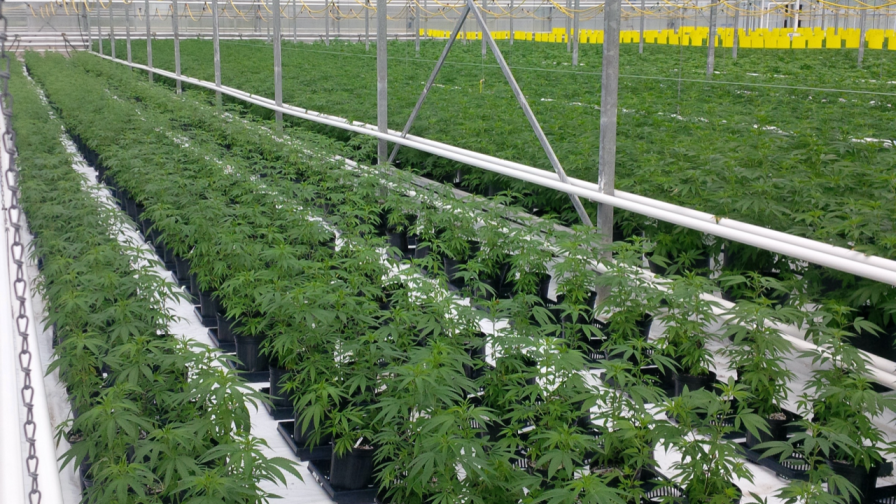Cannabis industry innovation is increasing. Look at every space area, and you’ll discover hardware and software advancements giving operators more control and strategic power. Cultivation technology advancements allow operators to grow, raise profit margins, and remain competitive in an increasingly competitive industry. Below are some of the most important and inventive marijuana feeding systems.
Fertigation
Hand watering is not an option for professional cannabis growers. Fertigation systems, commonly utilized in cannabis agriculture, are critical to scaling up any growth operation. Fertigation is a method of fertilization that uses a separate water supply to feed nutrients to cannabis plants precisely and effectively. Automation feeding can save labor time, human error from erroneous mixing, and the overuse of expensive nutrients. Furthermore, consistency is crucial for consistently providing excellent quality and high yields. Integrating a fertigation system aids in the objective of increasing yields.
How do fertigation systems work
Most fertigation systems can be tailored to your specific irrigation plans and requirements. Each plant-dependent nutrient, such as ammonium nitrate, phosphorus, and potassium, is supplied into a mixing tank, where each chemical is appropriately measured and blended. The fertigation system then pumps the nutrient combination into a shared pipe with the irrigation water, which is ultimately delivered to the plants through drip lines. These computer-controlled devices ensure that you have complete control over your fertilizer. We’re not only talking about irrigation timings but also precise control over chemical dosages and the capacity to manage and generate bespoke mixes for each watering zone.
Additionally, some systems let the operator adjust the blend mid-feed to account for crop stage, leach rates, and time of day, among others. Conversely, other fertigation systems are remotely monitored and managed by an app on your preferred mobile device, allowing you to monitor and tune from anywhere.
Benefits
There are various advantages to fertigation over other fertilization approaches. One such benefit is that there is very little waste because each component of the fertilizer combination is highly controlled, ensuring that just what is needed is used. At this degree of management, you will continuously have healthier plants, which leads to improved output and, eventually, income growth. The amount of person-hours necessary to manage and operate the fertigation process is a significant benefit that every present and future farmer should consider. These innovative, digitally controlled fertilizer systems have the potential to save over 400 person-hours every month!
Aquaponics
An aquaponic system is a way of cultivating marijuana that combines two functional and efficient systems, allowing them to work together to benefit each other. This method is analogous to aquaculture, in which humans raise fish such as bluegill, shrimp, and tilapia. Hydroponics is similar in that marijuana plants are grown without soil. When you combine hydroponics and aquaculture, you establish a closed-loop system for the fish and the plant and ensure that it is safe for ingestion.
How does aquaponics work
To configure your system, you would utilize a double root zone. You can fill the bottom half hydroponically or by suspending the roots in water. In many aspects, the aquaponics and hydroponic systems are nearly identical. The critical distinction is the source of nutrients. Nutrients are not supplied to the water tank during this procedure; instead, they are produced utilizing fish waste. The excrement would be diluted, piped, and applied to the marijuana plant’s roots. The roots will take those nutrients, and the water, believe it or not, will be cleansed before returning to the tank. The only thing you’ll need is fish food. You may cultivate it yourself or purchase it locally.
Benefits
As you develop your marijuana plants, you will also be rearing some nutrient-rich fish. Typically, tilapia is suitable for human eating after six to nine months of maturation. Other advantages include the rapid development rate provided by the aquaponics system and less water usage. The sole disadvantage is that the initial cost of employing this technology is higher.
Bubbleponics
Bubbleponics, also known as Deep Water Culture (DWC), is a plant processing method in which the plant’s roots are immersed in oxygenated, nutrient-rich water. Essentially, it is over a top-fed underground water system in which water is driven from the reservoir to the topmost section of the plant’s roots. Cannabis is one of the plants that benefit from this technique.
How do bubbleponics systems work
The roots of the weed plants are immersed in a reservoir containing a nutrient-rich fluid in the bubbleponics system. The plant roots are supported by net pots, which are additionally secured by air stones (which are mostly made of clay), which serve as the principal grow medium. The advantage of air stones is that they are very porous and lightweight. As a result, they provide adequate oxygen to the plants while simultaneously giving structural support. Air tubes are also essential components since they aid in delivering nutritional solutions to the plant. The nutrition solution is then pushed to the plant’s roots using an air pump.
Benefits
One of the critical advantages of bubbleponics systems is their compact size. This makes them perfect for novices with little room. Another feature that growers like about this technique is its straightforward maintenance. You can also buy a pre-configured system if you don’t have the time or expertise to set it up yourself. Compared to traditional hydroponic systems, the bubbleponic system provides considerable nutrients to the plant roots. As a result, the marijuana plants generate higher crops and grow faster.



